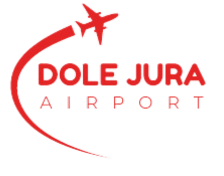What is Preflight inspection? 2) “Understanding Preflight Inspection”
1) “What is Preflight Inspection?”
Preflight inspection is a systematic process carried out by pilots before each flight to ensure that the aircraft is airworthy and safe for operation. It involves a complete examination of the exterior and interior components of the aircraft, including the wings, fuselage, control surfaces, landing gear, engine, cockpit, and various other systems.
During the preflight inspection, pilots visually inspect the aircraft for any signs of damage, leaks, or abnormalities. They also check the cleanliness and functionality of essential equipment such as lights, navigation systems, communication devices, and emergency equipment.
In addition to the visual inspection, pilots also review the aircraft’s documentation, such as maintenance records, weight and balance data, and flight manuals, to ensure compliance with regulations and proper operating procedures.
The preflight inspection is crucial as it helps identify any potential issues or malfunctions that could affect the safety and performance of the aircraft. By conducting a thorough preflight inspection, pilots can address any problems before takeoff and ensure a smooth and safe flight.
2) “Understanding Preflight Inspection”
Preflight Inspection: An Overview
Before every flight, pilots are required to perform a preflight inspection of their aircraft. This inspection is crucial for ensuring the safety and airworthiness of the aircraft. It involves a thorough examination of various components, systems, and documents to identify any potential issues or discrepancies that may affect the flight.
The purpose of the preflight inspection is to detect any visible signs of damage, malfunction, or wear and tear that may have occurred since the last flight. It also allows the pilot to check for any maintenance issues or required repairs that need to be addressed before the aircraft is deemed ready for flight.
During the preflight inspection, pilots typically follow a standardized checklist provided by the aircraft manufacturer or regulatory authorities. This checklist outlines the specific areas and items that need to be inspected, ensuring that no critical elements are overlooked.
The inspection usually starts with a visual examination of the exterior of the aircraft. Pilots look for any signs of structural damage, such as dents, cracks, or loose or missing parts. They also inspect the integrity of the control surfaces, landing gear, lights, antennas, and fuel system.
Moving inside the aircraft, pilots ensure that the cabin is clean, unobstructed, and free from any loose objects. They check the seats, seat belts, and harnesses for proper functionality, making sure they are secure and in good condition.
The preflight inspection also includes a review of the aircraft’s documentation. Pilots verify that the aircraft’s logbooks, maintenance records, and regulatory documents are up to date and comply with the necessary requirements.
In addition to the visual inspection, pilots may also perform basic functional checks of various systems and equipment, such as the communication, navigation, and electrical systems. They may also check the fuel quantity and quality, engine oil level, and tire pressure.
It is important to note that while the preflight inspection is comprehensive, it is not intended to replace regular maintenance or thorough inspections performed by certified mechanics. However, it serves as an essential step for pilots to ensure the immediate safety and airworthiness of the aircraft before each flight.
In conclusion, the preflight inspection is a vital part of flight preparation. It allows pilots to identify and address any visible issues or discrepancies, ensuring that the aircraft is safe and ready to fly. By following a standardized checklist and conducting a thorough examination of the aircraft’s exterior, interior, and documentation, pilots can confidently proceed with their flight knowing that they have taken the necessary steps to ensure a safe journey.
3) “The Importance of Preflight Inspection”
Preflight inspection is a critical aspect of aviation safety. It refers to the process of thoroughly examining an aircraft before each flight to ensure that it is in a safe and airworthy condition. This inspection is completed by the pilot or a certified mechanic and covers various components of the aircraft.
One of the main reasons why preflight inspection is important is to identify any potential mechanical issues or abnormalities that could jeopardize the safety of the flight. By conducting a comprehensive inspection, pilots can identify and rectify any problems before taking off. This reduces the risk of in-flight emergencies or accidents caused by equipment failure.
Another key importance of preflight inspection is compliance with aviation regulations. Regulatory bodies, such as the Federal Aviation Administration (FAA), mandate preflight inspections for all types of aircraft. This ensures that pilots and operators are responsible for maintaining the airworthiness of their aircraft, promoting a higher level of safety in aviation operations.
Moreover, preflight inspection helps pilots familiarize themselves with the specific aircraft they are flying. Every plane has unique characteristics and systems, and a thorough preflight inspection allows pilots to become familiar with any recent modifications or repairs. This knowledge is crucial for exercising proper control and handling of the aircraft during flight.
Additionally, preflight inspections help pilots build confidence and trust in their aircraft. By physically inspecting various components, such as the control surfaces, landing gear, engine, fuel system, and electrical systems, pilots gain reassurance that the aircraft is in optimal condition. This confidence contributes to their ability to make sound decisions and handle unexpected situations during flight.
In summary, the importance of preflight inspection cannot be overstated. It plays a crucial role in identifying potential issues, complying with regulations, familiarizing pilots with their aircraft, and building confidence. By conducting thorough inspections, pilots contribute to the overall safety and reliability of the aviation industry.
